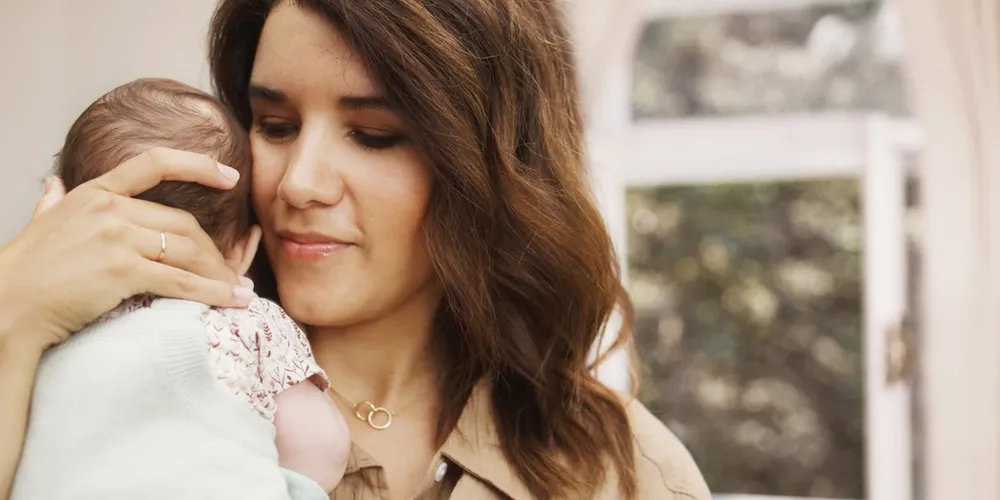Babies have a basic need to suck. It soothes, can relieve toothache, and helps them fall asleep. This means that using a pacifier hygienically is extremely important to keeping your child healthy. Find out here whether it’s really true that you should never lick pacifiers and how often they need to be sterilized!
Keep pacifiers clean – even if they’re new
Pacifiers should be sterilized before you first use them. To sterilize a pacifier, either boil it in a pot with sufficient water for 5 minutes or soak it in a mixture of water and sterilizing fluid.
If using a sterilizing solution, the pacifier should not be left in for longer than recommended, as this may damage the material. The ventilation hole is also very important: it allows the teat to be compressed in the mouth so that it can adapt to the palate, which is crucial in order for the jaw and mouth to develop properly.
Sterilizing pacifiers correctly
There are several ways to ensure germs are completely removed from a pacifier:
- Boiling: Boil the pacifier with sufficient water in a pot for about 5 minutes. It should be completely covered by the water, and the air should be pressed out of the teat beforehand. We recommend you use a separate pot for boiling pacifiers. Remember to keep an eye on the water level when boiling so that the plastic does not burn on the pot! Using a kettle or simply pouring boiling water over a pacifier will not work – the germs will not be killed off because the heat does not last long enough.
- Practical pacifier boxes: Some pacifiers are sold in special boxes that can be used for sterilization in the microwave. Watch this video to see how it works. How you sterilize your pacifiers has a significant influence on your CO2 footprint: for example, the MAM sterilizing and transport box reduces your CO2 emissions by up to 77% and saves energy.
- Steamer/vaporizer: Microwaveable sterilization containers use heat and steam to sterilize pacifiers. However, there are also devices in which bottles and/or pacifiers can be sterilized using steam – i.e., without needing a microwave.
- Chemical sterilization solutions: These usually involve dissolving tablets in boiled water, immersing the objects to be sterilized in the solution and “bathing” them for a certain period of time (see instructions supplied in the packaging).
What should I pay attention to during the Corona pandemic?
During the current COVID-19 crisis, we recommend establishing a higher than usual hygienic standard for baby products. It is advisable to sterilize bottles, teats, and pacifiers before each use. The best way for sterilizing our products is in the microwave, using the self-sterilizing function of the MAM Easy StartTM Anti-Colic bottle and of the practical sterilizer box of our pacifiers. This is fast and uses much less energy compared to boiling. Following this process doesn’t only kill bacteria, but it most probably also reduces or kills viruses like the COVID-19.
Up to what age do pacifiers etc. need to be sterilized?
Recommendations from official bodies can change and vary from country to country, but in general the following is recommended:
Sterilize pacifiers until your child is 6 to 9 months old
- Sterilize pacifiers for newborns and small babies daily
- When the “oral phase” begins (when everything goes in your baby’s mouth), reduce the frequency of sterilization and clean pacifiers with hot water and detergent
- Do not clean in a dishwasher – the aggressive cleaning agents usually damage the material and it can become brittle.
- Please note that this only applies topacifiers: you should continue to sterilize bottle teats, as they come into contact with milk
Licking pacifiers – yes or no?
If parents lick pacifiers to try and clean them, caries bacteria and other germs can be transmitted to the child. It is therefore recommended not to lick pacifiers.
Sources:
https://www.kinderarzt.at/kindergesundheit/lexikon/schnuller

























